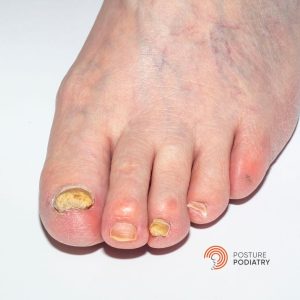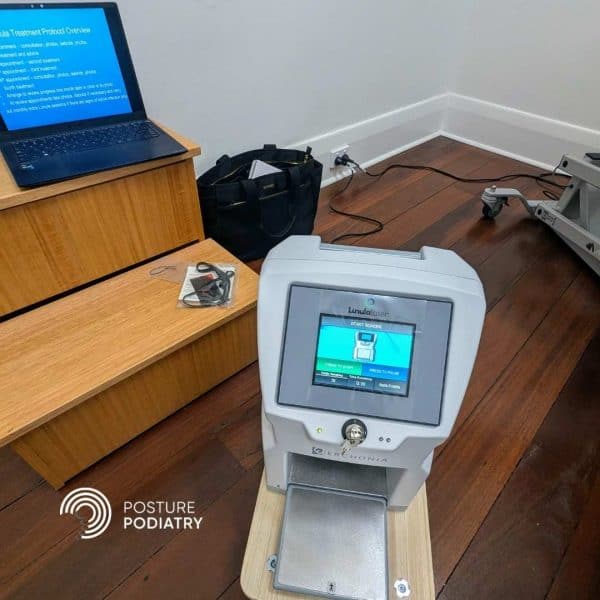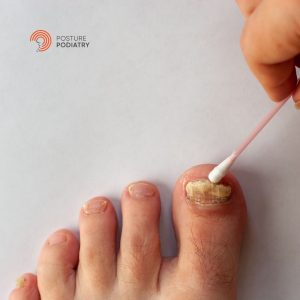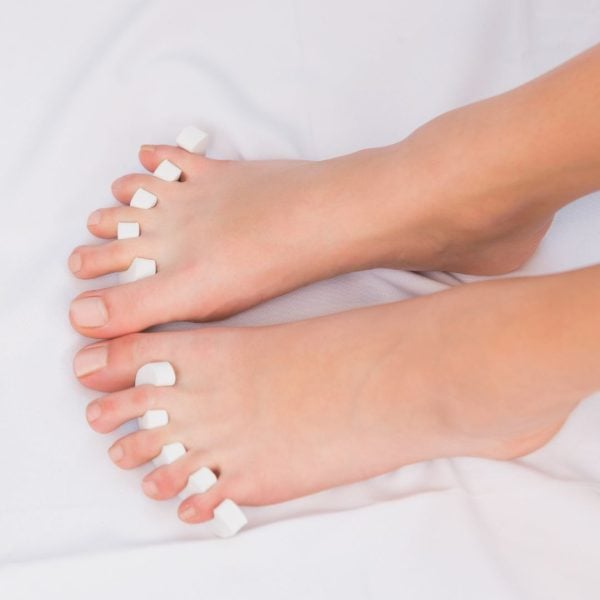
Our Guide to Treating Fungal Nail Fungus: Say Goodbye to Fungal Toenails!
Suffering from stubborn fungal nail fungus can be an uphill battle, affecting not just your feet but also your confidence. Fear not – our comprehensive guide provides the very best and latest information on toenail fungus management and further provide readers with the very best chance of ending fungal toenail problems for good. From tried-and-tested remedies to expert advice to the very latest advancements in laser treatment for fungal nails, we’ve got you covered every step of the way in your journey to healthy, fungus-free nails.
Whether you’re a longtime sufferer or just encountering this pesky problem, this guide will arm you with the knowledge and tools needed to tackle fungal nail fungus head-on. Our goal is to provide clients with the opportunity to say goodbye to hiding your feet and hello to stepping out with confidence again. It’s time to reclaim your healthy nails and put your best foot forward – quite literally!

Find an Adelaide Podiatrist Near Me for Fungal Toenail Treatment
BOOK ONLINE or Call 8362 5900 to see how we can help.
Understanding Fungal Nail Fungus
Fungal nail fungus, medically known as onychomycosis, is a prevalent condition that affects millions of people worldwide. This infection typically begins at the edge of the nail and can progress to the nail bed, leading to changes in colour, thickness, and texture. Fungal infections thrive in warm, damp environments, making toenails particularly susceptible due to the enclosed spaces of shoes and the moisture that accumulates. The infection can be caused by various types of fungi, including dermatophytes, yeasts, and moulds, each contributing to the deterioration of nail health.
While fungal nail infections are not life-threatening, they can significantly impact a person’s quality of life. The visible signs of the infection can lead to embarrassment and social anxiety, causing many individuals to avoid open-toed shoes or communal areas like swimming pools. Furthermore, untreated fungal nail fungus can lead to more severe complications, including pain, discomfort, and secondary bacterial infections. Understanding the nature of this condition is crucial for effective treatment and prevention.

Find an Adelaide Podiatrist Near Me for Fungal Toenail Treatment
BOOK ONLINE or Call 8362 5900 to see how we can help.
Recognizing the symptoms of fungal nail fungus is the first step in addressing the issue. Early detection can lead to more straightforward treatment options and a better prognosis. Additionally, being informed about this condition empowers individuals to seek help sooner rather than later, reclaiming their confidence and overall foot health. With the right knowledge and proactive measures, overcoming fungal nail fungus is entirely achievable.
Causes and Risk Factors of Fungal Nail Fungus
Fungal nail fungus arises due to various factors that contribute to the infection’s development and spread. The primary cause is exposure to fungi, which can enter the body through small cracks or gaps in the nail. These fungi thrive in moist, warm environments, making public spaces like showers, swimming pools, and locker rooms common breeding grounds. It’s essential to be mindful of such areas, as they can significantly increase the risk of infection.
Several risk factors increase the likelihood of developing fungal nail fungus. For instance, individuals with compromised immune systems, such as those with diabetes or HIV/AIDS, are more susceptible to infections. Age is another factor; older adults often experience reduced blood circulation and slower nail growth, providing a more favourable environment for fungi to thrive. Additionally, people with a history of athlete’s foot or other skin fungal infections may find themselves at a higher risk for nail fungus due to the contagious nature of these fungi.

Find an Adelaide Podiatrist Near Me for Fungal Toenail Treatment
BOOK ONLINE or Call 8362 5900 to see how we can help.
Personal hygiene and grooming habits also play a critical role in the risk of fungal nail infections. Wearing tight or poorly ventilated footwear can create a warm, damp environment that promotes fungal growth. Furthermore, neglecting proper nail care can lead to damage, making it easier for fungi to invade. Understanding these causes and risk factors can help individuals take preventive measures to protect their nails and maintain optimal foot health.
Symptoms of Fungal Nail Fungus
Identifying the symptoms of fungal nail fungus is key to addressing the problem promptly. One of the earliest signs is a change in the nail’s color, which may appear white, yellow, or even brown. As the infection progresses, the nail can become discolored, leading to an unsightly appearance that may prompt individuals to seek treatment. In some cases, the nail may lose its luster and develop a dull, brittle texture, making it more prone to breakage.
In addition to discoloration, the thickness of the affected nail often increases. Individuals may notice that their nails become unusually thick and difficult to trim. This thickening can lead to discomfort and pain, especially when wearing shoes or walking. In severe cases, the nail may begin to separate from the nail bed, a condition known as onycholysis, which can create further complications and increase the risk of secondary infections.

Find an Adelaide Podiatrist Near Me for Fungal Toenail Treatment
BOOK ONLINE or Call 8362 5900 to see how we can help.
Another symptom to be aware of is an unpleasant odour emanating from the infected nail. Fungal infections can produce a foul smell, often due to the buildup of debris under the nail. This odour can be particularly distressing and may lead individuals to avoid close contact with others. Recognizing these symptoms is essential for taking timely action to treat fungal nail fungus and regain confidence in the appearance and health of your nails.
Diagnosis and Treatment Options for Fungal Nail Fungus
To effectively manage fungal nail fungus, an accurate diagnosis is crucial. Registered podiatrists typically begin with a thorough examination of the affected nails and may perform additional tests, such as a nail clipping or scraping, to confirm the presence of fungal elements. In some cases, a laboratory culture may be performed to identify the specific type of fungus causing the infection. This step is essential as different fungi may require different treatment approaches.
Once diagnosed, various treatment options are available, ranging from topical applications to oral medications. Topical antifungal lacquers and creams are often the first line of defence, applied directly to the affected nail. While these treatments can be effective, they may take several months to yield results, as nails grow slowly. For more severe cases, oral antifungal medications may be prescribed. These systemic treatments work from within the body to eliminate the infection but may come with potential side effects and require close monitoring by a healthcare provider.

Find an Adelaide Podiatrist Near Me for Fungal Toenail Treatment
BOOK ONLINE or Call 8362 5900 to see how we can help.
In addition to pharmacological treatments, some individuals may explore alternative therapies, such as laser therapy or photodynamic therapy. These options can be effective for stubborn infections, though they may not be covered by insurance and can be costly. Whichever treatment path is chosen, it is vital to remain patient and consistent, as fungal nail infections can take time to resolve fully. Consulting with a registered podiatrist will help in determining the most appropriate course of action for your specific situation.
Preventing Fungal Nail Fungus
Prevention is key in the battle against fungal nail fungus. Adopting healthy foot hygiene practices can significantly reduce the risk of infection. Regularly washing and thoroughly drying your feet, especially between the toes, helps eliminate moisture that fungi thrive on. It’s also crucial to keep toenails trimmed and filed to minimize the chances of fungi entering through cracks or injuries. Avoiding nail polish and artificial nails during treatment can also promote healthier nail growth.
Choosing the right footwear is another essential aspect of prevention. It’s best to wear breathable shoes made from natural materials that allow air circulation, reducing moisture buildup. Avoid tight-fitting shoes that can create a warm, damp environment. When using communal facilities, such as gyms or swimming pools, wearing flip-flops or water shoes can provide a barrier against potential fungal exposure. These simple adjustments in your daily routine can be instrumental in protecting your feet.

Find an Adelaide Podiatrist Near Me for Fungal Toenail Treatment
BOOK ONLINE or Call 8362 5900 to see how we can help.
Lastly, it is essential to be mindful of your overall health. Maintaining a robust immune system through a balanced diet, regular exercise, and adequate rest can help prevent fungal infections. Individuals with underlying health conditions, such as diabetes, should take extra precautions to monitor their foot health. By incorporating these preventive measures into your lifestyle, you can significantly decrease the likelihood of encountering fungal nail fungus in the future.
Over-the-Counter Products for Fungal Nail Fungus
The market offers a variety of over-the-counter (OTC) products specifically designed to combat fungal nail fungus. These treatments typically include topical antifungal creams, ointments, and nail lacquers that can be easily applied at home. One popular option is ciclopirox nail lacquer, which is applied like regular nail polish and works by penetrating the nail to target the fungus underneath. Consistent application is crucial, as results may take several months to become apparent.
Another effective OTC treatment is terbinafine cream or gel, which can be applied directly to the affected nail and surrounding skin. This antifungal agent works by disrupting the fungal cell membrane, leading to its eventual death. Users should carefully follow the instructions provided on the packaging to ensure optimal effectiveness. While these products are widely available, it’s essential to keep in mind that they may not work for everyone, particularly in more severe cases.

Find an Adelaide Podiatrist Near Me for Fungal Toenail Treatment
BOOK ONLINE or Call 8362 5900 to see how we can help.
In addition to topical treatments, antifungal foot powders can help manage moisture and reduce the risk of reinfection. These powders can be sprinkled inside shoes or applied to feet to create an inhospitable environment for fungi. Combining OTC treatments with proper foot hygiene can lead to more successful outcomes in the fight against fungal nail fungus. If symptoms persist or worsen, consulting a registered podiatrist for further evaluation and treatment options is always advisable.
Medical Procedures for Severe Cases of Fungal Nail Fungus
In cases where fungal nail fungus is particularly severe or resistant to standard treatments, medical procedures may be necessary to resolve the issue effectively. One common procedure is debridement, where a registered podiatrist carefully removes the infected portion of the nail. This can help alleviate pain and allow topical treatments to penetrate more effectively. Debridement may be performed using specialized tools and should always be conducted in a sterile environment to minimize the risk of further infection.
Another option for persistent infections is laser therapy. This innovative treatment utilizes focused light beams to target and eliminate fungal cells without damaging surrounding tissue. While laser therapy has shown promise in clinical studies, it may not be covered by insurance, and multiple sessions may be required for the best results. Patients considering this option should consult with a qualified, registered podiatrist to discuss its feasibility and effectiveness.

Find an Adelaide Podiatrist Near Me for Fungal Toenail Treatment
BOOK ONLINE or Call 8362 5900 to see how we can help.
In extreme cases, surgical intervention may be required to remove the entire nail. This procedure is typically reserved for cases where the infection is causing significant pain, discomfort, or cosmetic concerns. After the nail is removed, a new nail will eventually grow back, although this process can take several months. Patients should closely follow post-operative care instructions to prevent complications and promote healing. Understanding these medical procedures can empower individuals to make informed decisions about their treatment options.
Lifestyle Adjustments to Manage Fungal Nail Fungus
Making lifestyle adjustments can significantly aid in managing and preventing fungal nail fungus. One of the most effective strategies is to prioritise foot hygiene. This includes washing your feet daily with soap and water, ensuring they are thoroughly dried afterward, especially between the toes. Additionally, regularly changing of socks and opting for moisture-wicking materials can help keep feet dry and reduce the risk of fungal growth.
Incorporating a healthy diet rich in vitamins and minerals can also support overall nail health. Foods high in biotin, zinc, and omega-3 fatty acids can promote stronger nails and help the body fight off infections. Vitamin D is also an important nutrient in maintaining a healthy immune system. Staying hydrated is equally important, as it supports overall skin and nail health. Regular exercise not only boosts the immune system but also improves circulation, which can benefit the nails’ growth and health.

Find an Adelaide Podiatrist Near Me for Fungal Toenail Treatment
BOOK ONLINE or Call 8362 5900 to see how we can help.
Lastly, being mindful of footwear choices plays a significant role in preventing fungal infections. Opting for breathable shoes and avoiding tight-fitting styles can help maintain a dry environment for your feet and reduce trauma and pressure on the nails. When engaging in activities such as swimming or gym workouts, wearing flip-flops can provide an extra layer of protection against fungi if using communal showers. By making these lifestyle adjustments, individuals can empower themselves to effectively manage and prevent fungal nail fungus, ensuring healthier nails are likely to remain for the long term.
Home Remedies for Fungal Nail Fungus
For those looking to address fungal nail fungus through natural remedies, several options have been tried with limited success. One popular home remedy is the use of tea tree oil, known for its antifungal properties. Applying a few drops of tea tree oil directly to the affected nail twice daily can help reduce fungal growth and improve nail appearance, however, it’s success rate is very low. If using home remedies, it is essential to monitor for any adverse reactions, particularly for individuals with sensitive skin.
Another home remedy is vinegar, particularly apple cider vinegar. The acidity of vinegar is thought to create an environment that is inhospitable to fungi. Soaking your feet in a mixture of equal parts vinegar and water for 10 minutes daily may help combat the infection but, unfortunately, there is very limited success recorded with this type of treatment. After soaking, ensure that the feet are thoroughly dried, as moisture can exacerbate the problem.

Find an Adelaide Podiatrist Near Me for Fungal Toenail Treatment
BOOK ONLINE or Call 8362 5900 to see how we can help.
Home remedies may help to improve hygiene and the appearance of nails and are generally cost effective but they rarely provide any long term success.
Conclusion: Embracing Healthy Nails Again
Overcoming fungal nail fungus is a journey that requires knowledge, patience, and commitment. By understanding the causes, symptoms, and treatment options, you can take informed steps towards reclaiming your nail health. Various treatment choices exist including home remedies, over-the-counter treatments, medical interventions, and laser therapy. If you’re tired of failing treatments and concerned about harmful side effects with the use of oral medication, our Lunula cold laser for fungal nails may well be the answer you’ve been looking for.
Find an Adelaide Podiatrist Near Me for Fungal Toenail Treatment
BOOK ONLINE or Call 8362 5900 to see how we can help.
Preventing future infections is just as important as treating existing ones. By adopting healthy foot hygiene practices, making lifestyle adjustments, and being mindful of your footwear choices, you can significantly reduce your risk of fungal nail fungus reinfection. Embracing these habits will not only benefit your nails but also enhance your overall confidence and well-being.

Ultimately, with the right tools and knowledge at your disposal, you’ll have the best possible chance of saying goodbye to toenail fungus and stepping out with pride. Healthy nails are generally achievable in approximately 80% of cases, and your journey towards recovery is possible with the right treatment regimen.
If you’re ready to embrace the gold standard of treatment – we’re here to help you embrace the path to healing, and get you stepping out in open footwear, sandals or thongs with confidence once again.
Find an Adelaide Podiatrist Near Me for Fungal Toenail Treatment
BOOK ONLINE or Call 8362 5900 to see how we can help.






